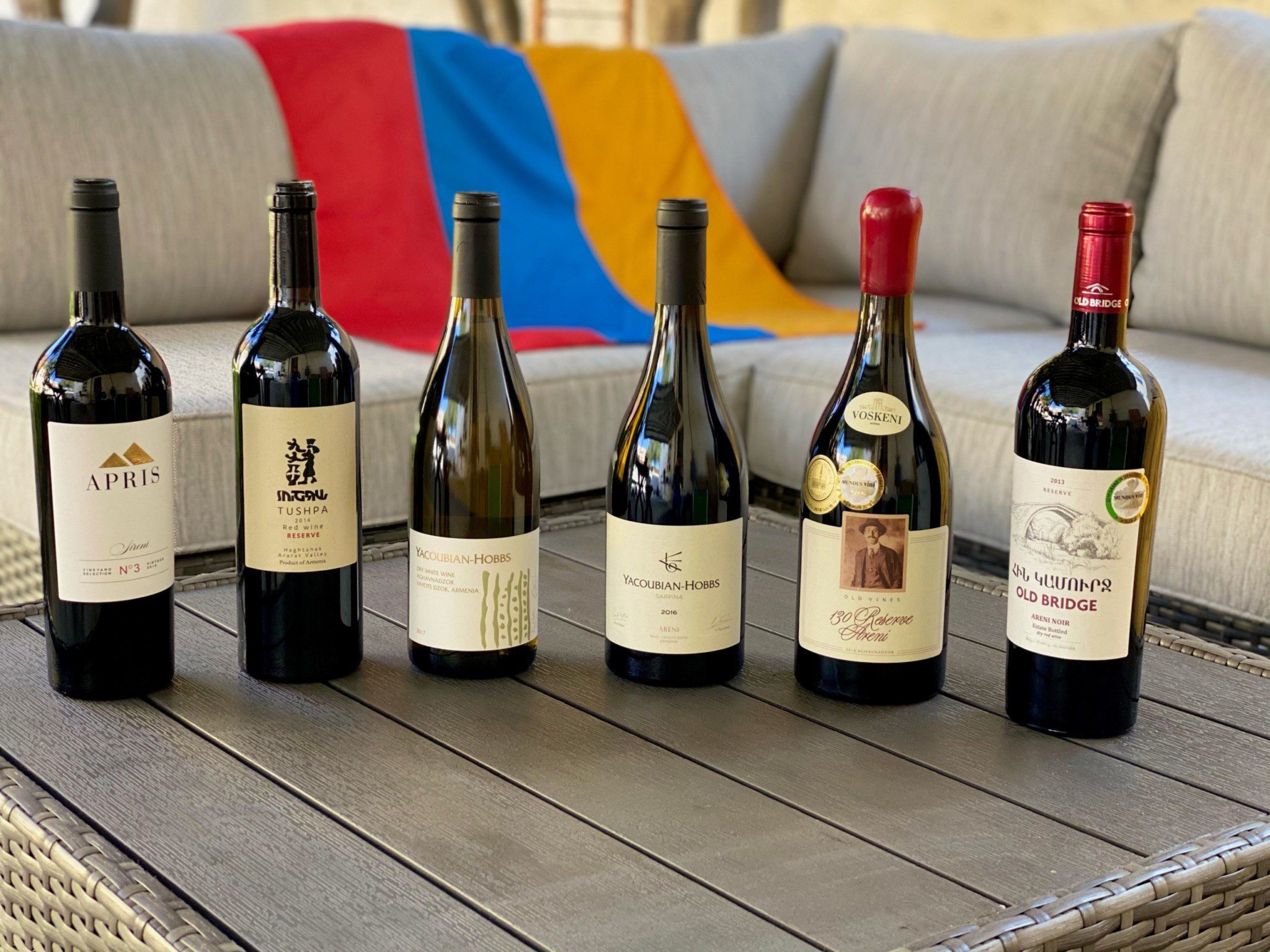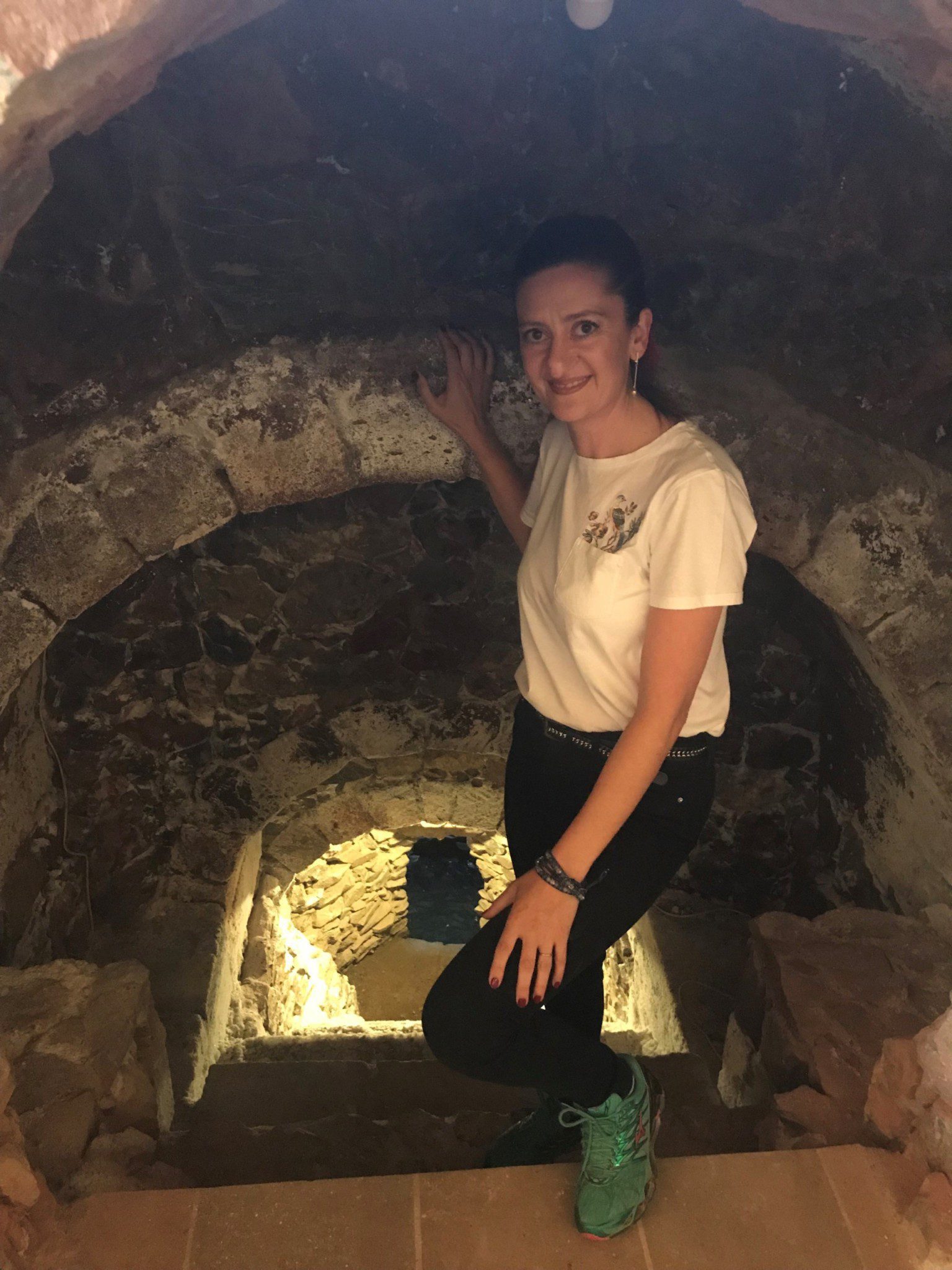
29 Dec Discovering Armenian Wine: The Armenian Wine Revival
I have tasted wines from numerous old world countries, from Italy, France, Spain, and Greece, to Croatia, Hungary, and Georgia. But, I had never had wines from Armenia until recently. It was a definite treat to learn about the history of wine in Armenia, home to the world’s oldest winery. But despite being home to the world’s oldest winery, the Armenian wine industry has had to rebuild after the Soviet Era and now the future of the industry is questionable due to the turmoil taking place. I wrote about the wines in the Napa Valley Register and share it here.
With so much turmoil taking place, Armenia has been in the news of late. An independent nation located in the mountainous Caucasus region between Asia and Europe, Armenia was once part of the former Soviet Republic. Today, a decades-old conflict has been reignited between Armenia and Azerbaijan, and fighting is taking place. This conflict is threatening a quickly burgeoning yet unknown wine industry.
Wine is not a new industry in Armenia. In fact, Armenia is home to the world’s oldest winery. In 2007, archeologists discovered Areni-1 Winery in a cave hidden in Arpa Canyon near Areni Village where they uncovered 6,100-year-old intact clay karas jugs buried in the soil, as well as a wine press. Wine containers (240-gallon clay vessels) dating back to the 8th century BC, during the reign of King Argishti I (786-735 BC) were also excavated in Karmir Blur in the south-western part of Yerevan, the capital of Armenia.
Armenia was once the wine capital of the world. But, during the Soviet Era, the wine industry in Armenia was shifted to mass production and industrialization. There was no longer a private sector. In addition, there were anti-alcohol campaigns. Stalin made assignments and Georgia became the center of wine production, while Armenia was designated as the brandy-producing country. Armenia’s wine industry almost disappeared as vineyards and businesses were destroyed.
Armenia gained independence in 1991. With the help of an investment from the diaspora, flying winemakers, world-class equipment, vineyard management consultants and custom wine crush facilities, the Armenian wine industry has seen a revival over the past 10 to 15 years. It is still a relatively young industry and there is much research to be done with regards to soil analysis, varietal analysis and viticultural area. There are currently 40,000 acres of vineyards planted and 36 wine producers, of which only five percent export to the United States.
But Armenia has much potential as a wine region. A mountainous country with high-altitude elevation, it is approximately 700-1,700 meters above sea level. It is a cool-climate growing region with rivers and wind. The soils are predominantly volcanic and rocky. In addition, Armenia has more than 400 indigenous varieties. Currently, 55 indigenous grapes are being used. Research is being done on many other grapes but currently they are still interplanted in the vineyards. Most of the native grapes are un-grafted. There are also European and Georgian varieties planted.
The most planted Armenian white grape varieties are Voskehat, Khatoun Kharji, Lalvari, Banants, Kangun, Garan Dmak, and Mskhali. The most planted red grape varieties are Areni, Kakhet, Tozot, Haghtanak, Karmrahyut and Sireni/Khndoghni.
Voskehat translates to “golden berry” and is the queen of Armenian grapes. Lab tests showed that the grape is 3,500 years old, and there are vines that are over 150 years old still planted. This late-ripening grape produces a wine with fresh white fruits, citrus, fresh-cut grass, alpine flowers with nice acidity and flavors of beeswax. If you have not tried Voskehat, it could be compared to Chenin Blanc.
Areni Noir is a grape with origins dating back to 4,100 BC, and today there are 130-year-old vines still planted. The grape produces an intensely colored medium-bodied wine with red fruit aromas of cherry, raspberry, cranberry, and pomegranate, as well as floral and herbal accents. Areni is comparable to an Oregon Pinot Noir.
Haghtanak which means “victory” is a local grape that was made by crossing Armenian grapes with the Georgian Saperavi grape. Rich in tannins, Haghtanak wines have notes of blackberry, blackcurrant, plum, cherry, cloves and vanilla. It is a primary blending grape. Haghtanak can be compared to Mourvédre from Spain.
Sireni/Khndogni is a grape with high tannins and notes of black and blue fruits, earth, and cotton candy. The name Sireni means “loving,” and Khndoghni is derived from the Armenian word “khind,” which means “laughter.” Sireni is comparable to Syrah.
In addition to the use of indigenous grapes, Armenian wine producers use karas, clay amphorae, and Artsakh Oak or Caucasian Oak, which imparts olive flavors, to age wines. While most wine is made naturally, Armenia also has its first certified organic and biodynamic winery.
While Armenia does not have official AVAs yet, there are wine regions across the country: Aragatsotn, Armavir, Ararat, Vayots Dzor, Artsakh, and Tavush.
I had the privilege to learn about the grapes and regions and was introduced to some producers thanks to a recent virtual tasting with wine consultant and executive director of the Armenian Wines and Spirits Festival in Los Angeles Anush Gharibyan O’Connor and organized by sommelier Christie Norman.
Artsakh (also known as Nagorno-Karabakh)
Located in the southern region of Armenia where winemaking dates back to the 7th century, at 800 meters above sea level, Artsakh experiences a mild/subtropical climate with cold winters, torrential rains and hail and fog 100-125 days per year. The soil is clay and volcanic, and the primary grape grown here is Sireni.
Apris 2018 Sireni, Artsakh, Armenia ($25)
“Apris” is an Armenian exclamation used as a thank you, cheers, job well done. Apris Wines is a family project between two friends, Garen Bagdasarian and Bagdasar Gulian. The first vintage of Apris Wine was 2018. It has a pretty nose of blackcurrant, blackberry, olives and licorice. It is smooth and medium-bodied on the palate with lightly grippy tannins.
Unfortunately, due to the fighting in Artsakh, no one is currently at the winery to bottle the 2019, which remains in tanks, and the 2020 harvest did not take place. One of the owners has lost one of his sons in the conflict and his other son is still on the front lines.
Ararat is the second-largest viticultural region in Armenia, and the Ararat plain is one of the largest plateaus in Armenia. Vineyards were established during the reign of King Rusa the Second (685-645 BC). Located 800-1000 meters above sea level, Ararat is a semi-desert, dry region with hot summers and very cold winters. The soils are clay-based and partially consists of sedimentary rocks.
Tushpa 2014 Reserve Haghtanak, Ararat Valley, Armenia ($26)
Tushpa is the dream of Mihran Manasserian who studied winemaking at the Armenian National Agrarian University during the Soviet Union era and worked for different wineries. In 1992, after the Soviet Union collapsed, he bought and planted six hectares of vines located 35 kilometers from Yerevan and nestled below the Biblical Mt. Ararate. The Reserve Haghtanak has a sour cherry, black currant, licorice, dark olive and vanilla notes. On the palate, the wine has a savory finish with herbal notes.
Aragatsotn
Located in the northwest of Armenia and with close proximity to Yerevan, Aragatsotn has seen some of the biggest investments in recent years. Aragatsotn means “foot of the Aragats” which refers to Mount Aragats, the country’s highest peak. The climate is continental with hot and arid weather and the soils are volcanic.
Vayots Dzor
The birthplace of wine in the world, Vayots Dzor, located in the south-central region, is the jewel of Armenian winemaking heritage. The region sits at an altitude of 1,000-1,700 meters above sea level, and the soils are volcanic and rocky. The continental climate provides warm, dry, sunny summers and cold, snowy winters. Within Vayots Dzor, there are two sub-regions, Areni and Aghavnadzor.
Yacoubian-Hobbs 2017 White Blend, Aghavnadzor, Vayots Dzor, Armenia ($25)
Yacoubian-Hobbs winery is a collaboration between the Yacoubian family and internationally renowned winemaker Paul Hobbs. Viken Yacoubian, a psychology professor at Woodbury University in Los Angeles, fell in love with wine after drinking a Paul Hobbs wine in 2001. He wrote Paul Hobbs a letter and was surprised to get a response. The two men became friends and Viken organized a trip with his brother Vahe and Paul to visit wineries in Armenia. In 2008, they established their winery in the birthplace of wine, with vineyards located around the historic Areni-1 cave.
The 2017 white wine is a blend of 80 percent Voskehat, 10 percent Khatuni, 5 percent Qrdi and 5 percent Garan Demak. It has delicate aromas of citrus, pear, white flowers, and white pepper. On the palate, the wine is medium-bodied with good acidity and salty minerality.
Yacoubian-Hobbs 2016 Sarpina, Areni, Vayots Dzor, Armenia ($45)
100 percent Areni, the wine is fermented in stainless steel and aged for seven months in French oak barrels. Aromas of cherries, pomegranate molasses, dried flowers with a hint of vanilla jump out of the glass. On the palate, the wine has velvety tannins balanced with acidity that keeps the wine lingering on the palate.
Voskeni 2016 Areni Noir, Vayots Dzor, Armenia ($59.99)
A family-owned winery, Voskeni is a story of endurance. Smbat Mateossian escaped with his family to Boston in 1915 during the first genocide. After making money, he returned to Armenia, bought land and established a vineyard in the 1920s.
During the Bolshevik era, the Soviets confiscated the land and exiled Smbat. In 2008, the Mateossian bought back the vineyard. The Areni, aged for 18 months in Caucasian oak, has notes of fruit notes of plums, cherries, and currants as well as herbal, black pepper, olive and tobacco notes. Elegant tannins and medium acidity balance this fruit-forward wine.
Old Bridge Winery 2013 Areni Noir, Vayots Dzor, Armenia ($29.99)
Established in 1998, Old Bridge Winery is a family-owned business. When proprietor Armen Khalatyan and his family first planted vines, there was nothing around them. After 20 years, they not only have the vineyards and winery but also a bed & breakfast and restaurant.
For the 2013 Areni, the grapes were hand-harvested, fermented in stainless steel, and aged in Caucasian oak barrels for twenty-four months. The wine has aromas of dark black fruit, coffee, leather, and black pepper. On the palate, the wine is savory with soft tannins and juicy acidity.
Armenia is an ancient, yet young, wine region and the wines have been garnering interest. Within Armenia, wine bars and wine festivals are changing the perception of drinking wine.
The EVN Academy, with support from USAID, provides two years of wine education to anyone interested.
In addition, much has been written about Armenian wines in international wine publications. Wines have won gold, silver and bronze medals at international wine competitions such as Decanter World Wine Awards and Mundus Vini.
Armenia has so much potential yet with the current conflicts, the future is unknown.
If you are interested in trying Armenian Wines, they are available in the US. Visit WinesofArmenia.com, CedarWines.com, or PaulHobbsSelections.com/shop to find any of the wines listed above and more.
Read the original story in the Napa Valley Register.
Discover more from Please The Palate
Subscribe to get the latest posts sent to your email.







